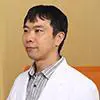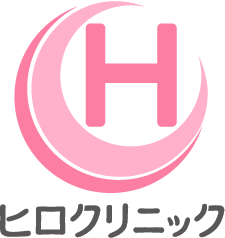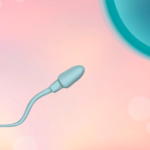- Down syndrome, the most common chromosomal abnormality
- Health risks associated with growing children with Down syndrome
- The personality and environment of children with Down syndrome
- Social Support for People with Down Syndrome
- Educational Support System for Children with Down Syndrome
- Employment for people with Down syndrome
- Summary
Down syndrome, the most common chromosomal abnormality
Down Syndrome (Down’s Syndrome) is the most common chromosomal disorder. Humans have 46 chromosomes, two each of autosomes 1-22 and two sex chromosomes. Down’s syndrome is also known as 21 trisomy, in which the normal number of chromosome 21 is two, but for some reason there is an excess of one, resulting in mental retardation and physical developmental delays.
Down’s syndrome are divided into three types according to chromosome structure: standard type, translocation type, and mosaic type. About 95% of the cases are standard type, which is caused by an excess of one chromosome 21 due to a failure of chromosome separation between the paternal and maternal chromosomes.
The translocation type differs from the standard type in that a portion of chromosome 21 of one of the parents is attached to another chromosome (translocation). It is caused when one of the parents has this translocated chromosome, and it is estimated that translocations account for about 3% of all cases.
Mosaicism is considered a very rare chromosomal abnormality, with an incidence of about 2% of all cases. It is a mixture of cells with chromosomal abnormalities and normal cells.
Given these considerations Down’s syndrome the probability of a genetic component of the disease is low, and neither the cause nor the cure has been elucidated to date. However, with improvements in pediatric care and medical management of complications, the 1960s Down’s syndrome. The average life expectancy of the first generation of the world’s population has increased from around 10 years to about 60 years now, Down’s syndrome. The average life expectancy of patients will continue to increase.
Physical Characteristics and Intellectual Disability of Down Syndrome
Down’s syndrome is a congenital disease caused by an abnormality in the number of chromosomes. There are 23 pairs of chromosomes, Down’s syndrome is the 21st dye
Down’s syndrome there is no clear classification of “severe” or “mild” in itself. However, the general classification is based on the risk of complications and the degree of intellectual disability.
In addition, there are individual differences in physical characteristics and intellectual disabilities. academics and work, although they are very rare, Down’s syndrome there have been cases of marriages between patients.

Physical Characteristics of Down Syndrome
Down’s syndrome the common physical characteristics of the two species are the prominent, prominent eyes, the low nose, and the small, flat head. These down’s syndrome facial features are difficult to diagnose at birth based on facial features alone, since the central part of the face grows slowly and the outer part of the face grows first.
Also, Down’s syndrome has low muscle tone and often has an open mouth. Overall, they are small in stature, and they also tend to be obese down’s syndrome The physical characteristics of the
Intellectual disability and IQ in Down syndrome
Intellectual disability is a disability that generally occurs in persons under the age of 18 and is characterized by the presence of “apparent limitations in both IQ and adaptive functioning” in three domains: conceptual (reading, writing, and logical thinking), social (interpersonal relationships and self-control), and practical (behavior and money management).
The degree of intellectual disability and IQ seen in Down syndrome varies from person to person; an IQ of 51 or higher is considered sufficient to enable the child to communicate and live independently in daily life.
*If the IQ of a child without Down syndrome is 100, the average IQ of a child with Down syndrome is approximately 50.
Health risks associated with growing children with Down syndrome
In addition to physical and IQ problems, children with Down syndrome present health risks due to a variety of complications. Although the average life expectancy of people with Down syndrome has increased compared to the past, about half of all children with Down syndrome have heart disease (a disease that occurs in the heart).
Down syndrome is also associated with a number of gastrointestinal disorders, and in many cases, depending on the symptoms, surgery may be required soon after birth. Chronic constipation is also common due to weak abdominal pressure caused by muscle weakness.
For both health risks, it is important to prevent serious illness by early detection through regular checkups from infancy, and to provide transitional care from childhood to adulthood.
Infancy
Internal Organs
The most common complication seen in Down syndrome is congenital heart disease (such as atrioventricular septal defect), which occurs in about 40 to 50% of cases. Other complications include pulmonary hypertension, duodenal atresia, and cloacal anus (rectal anorectal malformation).
The Sense of Hearing
Children with Down syndrome are prone to otitis media due to the narrowing of the ear canal, and about 40 to 80% of them have hearing loss in one or both ears. Hearing loss has a significant impact on language and mental development, and as the child grows, sensorineural hearing loss, which makes it difficult to distinguish between sounds, increases, requiring appropriate treatment and checkups from an early age.
Vision
About 60% of children with Down syndrome have congenital cataracts, refractive errors (astigmatism, myopia, and hyperopia), nystagmus, endothelium (eyelashes touching the eyeball), and exothelium (eyelid flipping outward and flipping up). Since vision loss greatly affects the stimulation of information from vision to the brain, appropriate treatment and checkups are necessary from an early stage.
School Age
Circulatory Organ
Patients with Down syndrome are also characterized by a tendency toward obesity. This is due to low physical activity due to muscle weakness, low basal metabolism, inadequate chewing due to protruding tongue, and unbalanced food preferences. As a result, children with Down syndrome are at high risk of developing diabetes and hyperuricemia, which require attention.
Developmental Disorder
Developmental disabilities are defined in the Developmental Disabilities Support Act as “autism, Asperger’s syndrome and other pervasive developmental disorders, learning disabilities, attention deficit hyperactivity disorder, and other similar disorders of brain function whose symptoms usually manifest at a young age.
Given the above, there are many types of developmental disorders, each with different symptoms. Down syndrome is classified as a developmental disorder caused by a chromosomal abnormality.
Adulthood
Department of internal medicine (hospital, etc.)
Patients with Down syndrome have impaired oral functions such as lip and tongue movement. As a result, their water intake is lower than that of normal people, and they often develop gout in adulthood due to high uric acid levels from childhood. Other symptoms include abnormal thyroid function, bradycardia or tachycardia, constipation, swelling, and weight gain.
Rapid regression (regression-like symptoms), premature aging
Rapid regression and premature aging are symptoms often seen in patients with Down syndrome who have reached adulthood, such as sudden loss of ability to do things they used to be able to do, lack of facial expression, and significant loss of motor function. The symptoms are said to be similar to those of Alzheimer’s disease, and in many cases there is no fundamental cure, resulting in loss of communication or even bedridden.
The personality and environment of children with Down syndrome
In general, the personalities of children with Down syndrome are often thought of as “calm,” “gentle,” or “stubborn. However, just as there are individual differences in the IQ of children with Down syndrome, their personalities also vary. The personality development of children with Down syndrome is no different from that of normal children, and is greatly influenced by the mother’s (guardian’s) education, views on child-rearing, and living environment. Some children with Down syndrome develop unexpected talents, and some become active as artists and musicians.
Social Support for People with Down Syndrome
Many children with Down syndrome attend support classes, regular classes, and support schools in local schools while using classes for rehabilitation.
People with Down syndrome can also obtain the Ryoiku Techo (Certificate of Physical Disability), which is given to people with intellectual disabilities, and the Physical Disability Certificate. By obtaining these welfare handbooks, they can receive discounts on public transportation and cab fares, as well as tax deductions. In addition, discounts are also available for cell phone usage fees and admission fees to leisure facilities.
Educational Support System for Children with Down Syndrome
When children with Down syndrome receive education, there are two options for school-age children: “special needs schools” and “special needs classes.
Special needs school
This school is a merger of the existing schools for the deaf, the blind, and the handicapped. The purpose of the school is to provide education necessary to overcome learning and living difficulties for those with visual, hearing, intellectual, or physical disabilities, and to cultivate the ability to live independently and to participate in society.
In terms of learning, students will study subjects such as arithmetic, Japanese, music, and art, just as in regular elementary through high school. Students will receive an education that is tailored to their individual characteristics so that they can overcome their disabilities and develop their abilities.
In high school, students can take specialized courses in agriculture, physical therapy, building cleaning technician, and other characteristics. In terms of daily life, students can learn to express their language, control their behavior, and deal with interpersonal relationships and situations.
Special Support Grade
These are classes placed in elementary and junior high schools for children and students with special educational needs, such as those with intellectual disabilities or limb disabilities. Until now, students with severe disabilities have attended special-needs schools in principle, but the system was revised in 2013, allowing students to decide where to attend school.
Not all Down Syndrome is an intellectual disability, and in many cases, students are able to improve their academic skills by engaging in learning appropriate to their personality and characteristics from an early age. Many people with Down syndrome enroll in regular schools and, after graduating from high school, go on to college, junior college, vocational school, or pursue graduate studies.
A small number of colleges have also begun to establish open colleges for people with disabilities. Although not institutionally a university, there is a growing movement to establish colleges for people with disabilities.

Employment for people with Down syndrome
According to the Ministry of Health, Labor, and Welfare’s criteria, it is possible to work even if you have a severe intellectual disability.
In raising a child with Down syndrome, many parents may be concerned about their child’s future. However, some companies are hiring people with Down syndrome with certain quotas.
In some foreign countries, cafes and restaurants are operated by people with Down syndrome, taking advantage of their “characteristics” such as their ability to steadily perform the same tasks. In Japan, many people with Down syndrome work at workplaces and restaurants.
Depending on the degree of Down syndrome, the nature of the work varies. However, the ideal society is not limited to those with Down syndrome, and even if a person has a disability, the ideal society is one that communicates within the general community and supports people to become independent.
FY2021 Employment Status of Persons with Disabilities, Ministry of Health, Labor and Welfare
See also: Ministry of Health, Labour and Welfare – Publication of a summary of the status of job placement of persons with disabilities through Hello Work.
Number of jobs (pieces) Difference from the previous year (%) Job placement rate (%) (difference from the previous year) Disabled Person 20,829 Increase of 804 cases (4.0% increase) 35.9 (up 1.2 points) Mentally-handicapped Person 19,957 Increase of 156 cases (0.8% increase) 57.6 (down 0.1 points) Mentally Challenged Person 45,885 5,261 additions (13.0% increase) 42.4 (down 0.2 points) Other disabilities 9,509 119 cases (1.3% increase) 41.3 (up 3.1 points) Total 96,180 6,340 additions (7.1% increase) 42.9(up 0.5 points)
The number of people with disabilities (including Down syndrome) finding employment is on the rise. The main job opportunities are in the medical, welfare, manufacturing, and service industries.
The most common type of employment for persons with intellectual disabilities is “occupations related to production processes,” followed by “service occupations” and “occupations such as transportation and cleaning/packaging.
Many people with Down syndrome not only work for general companies, but through hard work and training, their talents have blossomed and they are active in various fields such as art and sports. There are two types of systems that support working: “support for transition to employment” and “support for continuous employment.
Labor Transition Support
This support is available for people under 65 years of age with physical disabilities, intellectual disabilities, mental illness, or intractable diseases. The program is designed to help them acquire the necessary skills in order to find employment in general companies. There is no employment contract and no wages are paid, but in principle, they can receive not only job skills but also communication and knowledge and training necessary to continue working for two years through on-the-job training. In addition, the program also provides full support for finding a workplace that is suited to the characteristics of the applicant from among the businesses that have been approved by Hello Work and the Ministry of Health, Labor and Welfare.
Continuous Employment Support
It is a service that provides opportunities to work for those who have difficulty finding employment in general companies. Support for transition to employment is a place to hone skills, while support for continuous employment is a place to work for those who have difficulty finding employment in general companies. There are two types of support: Type A and Type B. The difference is that labor transition support is a place for learning to improve skills, and continuous employment support is a place to work.
Type A (blood, influenza, hepatitis, etc.)
This program is available to those who are able to work based on an employment contract. You will receive a salary and at the same time acquire the knowledge and skills necessary to find a job in a public company.
Type B (blood, influenza, hepatitis, etc.)
This program is for people who have difficulty with the work content of Type A. They will engage in production activities through work training, etc., and will be paid for the results. After accumulating training, they aim to receive support for continuous employment support Type A and transitional support for employment.
Support for Job Placement
This program, which began in April 2018, provides support for people with disabilities to enable them to work for a long time. You can talk face-to-face about problems that you have not had in your life before, such as communication with coworkers and supervisors, physical condition management, and financial management, and receive advice on how to solve problems and achieve a comfortable working environment.
However, since employment settlement support is a service that has just begun, many offices are not widespread, and it is necessary to inquire directly about which municipalities and offices offer this service.
Summary
Down syndrome is the most common congenital disorder among chromosomal abnormalities. Although there is no known cause or cure for Down syndrome, it is known that the risk of developing the disease increases with increasing maternal age. In addition, Down syndrome can cause a variety of complications throughout childhood and into adulthood. For these reasons, when Down syndrome is diagnosed during pregnancy, it is important to be prepared for the medical and living environment after delivery.
Recently, NIPT (New Prenatal Diagnosis) has made it possible to screen for Down Syndrome using only maternal blood.
Hiro Clinic NIPT We will explain about Down syndrome and chromosomal abnormalities in detail so that you can learn about the health of your fetus as early as possible and have a healthy pregnancy and delivery. Please contact HIRO CLINIC NIPT for consultation about NIPT (New Prenatal Diagnosis).
[References]
Article Editorial Supervisor

岡 博史先生
【役職】
【資格】
【略歴】
【所属】
【SNS】
 中文
中文

















